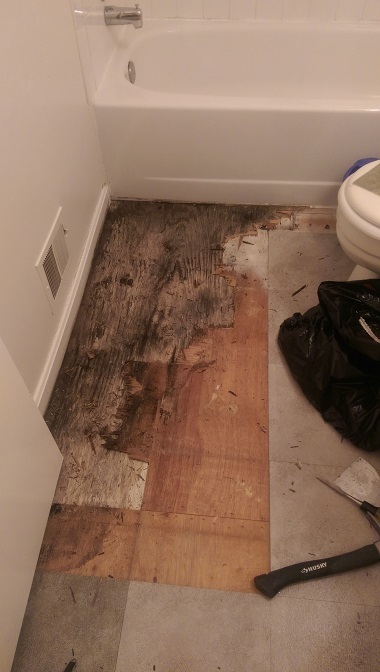Exactly How to Prevent Bathroom Water Damage
Exactly How to Prevent Bathroom Water Damage
Blog Article
What are your beliefs on Preventing Water Damage in the Bathroom?

The washroom is extremely prone for wet buildup and prospective water damages as a result of the constant use water in it. This article uses straightforward inspection techniques to assist finding water damages threats.
The constant use water in the washroom makes it exceptionally vulnerable for moist build-up as well as possible water damages. By evaluating it on a regular basis, you can lower water relevant problems.
The adhering to collection of examinations is very easy to execute and also must be done when in every three months in order to keep your shower room healthy as well as to avoid prospective water damages triggered by the bathtub, the shower, pipe joints and also plumbing, sinks, closets, as well as the toilet
Do not overlook performing these examinations and be thorough while performing them. Remember that these straightforward examinations can conserve you a lot of money by providing very early indicators for water damage
Bath tub as well as Shower
The shower and bathtub call for special attention and upkeep. Inspect the ceramic tiles and change if broken. Make sure that there is no missing out on cement in between the ceramic tiles. Examine and replace broken caulking at joints where the walls fulfill the floor or the bathtub. Obstructed drains and pipelines issues will certainly stop the bathtub from drying out as well as may show severe problems beneath the tub. Consult with a specialist right away to prevent architectural damage. Take notice of discolorations or soft locations around the tub walls as they might suggest an inner leak.
Plumbing
Signs for water damages are hard to identify because most pipelines are installed inside the wall surfaces.
Pay special interest to floor covering as well as walls wetness and also spots as they might suggest an invisible plumbing issue. Examine wetness degrees in adjoining spaces as well.
Sinks as well as Cabinets
Sinks and cupboards are revealed to wetness and also humidity day-to-day and are commonly forgotten. Examine consistently under the sink as well as on the counter top above it. Repair any type of drip in the catch as it may suggest drainpipe troubles. Look around the sink, slow draining pipes might indicate an obstructed drainpipe. Replace sink seals if they are cracked or loosened.
The Commode
The bathroom is a susceptible water junction. Inspect the water lines and search for leakages around the toilet seat, in the tube, as well as under the water storage tank. If you identify any type of indications of dampness on the flooring around the bathroom, look for leakages in the toilet rim and also container seals.
Understand that hanging bathroom dish antiperspirants enhances the opportunities for clogs.
Water Damage Signs In The Bathroom To Avoid Cleanup
Musty smell
This is one of the easiest signs to catch because musty smells are so odorous. The damp, earthy, moldy smell should be a big red flag. The smell will develop when moisture gets trapped in surfaces, and begins to facilitate mold growth. Leaking pipes under cabinets, inside walls, and behind shower fixtures will cause moisture to stay trapped and not dry, which will lead to mold growth and spread. As soon as you notice any musty smells in your bathroom, have it checked for hidden water damage and cleanup signs.
Visible mold
If the smell isn’t there to give it away, sometimes you will actually see mold growth. Finding mold in your bathroom is a serious problem, because mold is very harmful to your health. By the time mold growth is visible, it also means that water damage has already occurred and been present for some time. The only way the mold problem can be resolved is to find the source of the moisture and get it stopped. To safely and adequately remove mold, you need to have professionals handle the remediation. Do not waste any time in getting mold problems addressed, fixed, and sanitized so that you can protect you and your family from the many respiratory symptoms caused by mold exposure.
Damaged floors
Bathroom floors should be able to withstand some exposure to water while still remaining in good condition. However, when excess exposure or water leaks occur, they will begin to damage even the most water-resistant flooring. If you notice any cracking, bubbling, staining, or warping on your bathroom floors, there is probably a water leak somewhere causing the distortion. If you notice areas of the floor have become softer, or even have a spongy feeling, there is probably damage to the subfloor. Subflooring is typically made up of plywood. When plywood is exposed to water or moisture, it will absorb it. Once it has become saturated, the weight of the excess water will cause the wood to swell and soften. Check the floors in your bathroom frequently to catch any of these sings before they lead to damaged subflooring.
Changes on walls
When water leaks behind walls, it will cause changes in the drywall. Peeling plaster, blistering paint, and soggy wallpaper are all good indicators that excess water is building up behind the wall. Water leaking behind drywall will cause it to swell and be soft to the tough. If you start to notice gaps along the trim of your walls, or where tile meets the wall, it could also be a strong indicator that there is a leak behind the wall. Any changes, distortion, or damage on the walls should be evaluated as soon as you notice it to prevent further water damage and cleanup.

As a fervent person who reads on How to Prevent Bathroom Water Damage, I figured sharing that article was really helpful. In case you enjoyed reading our page please remember to share it. Thanks a bunch for your time. Visit us again soon.
Pricing Report this page